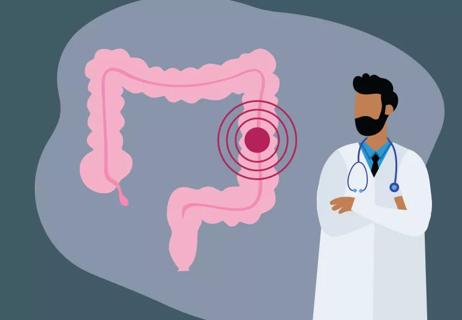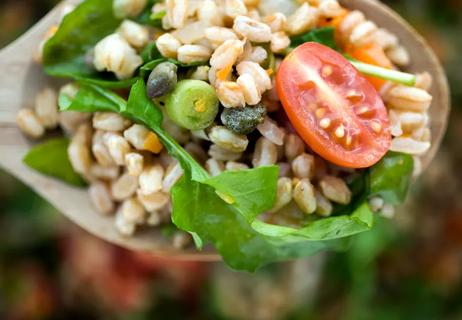Common culprits and pinpointing the cause

You like the foods you eat. Sometimes, though, your foods don’t like you. It’s really your gastrointestinal (GI) tract that is responding with symptoms of food intolerance that can make you regret some of your food choices. Food intolerances are common. In fact, nearly everyone has eaten something that disagrees with them.
Advertisement
Cleveland Clinic is a non-profit academic medical center. Advertising on our site helps support our mission. We do not endorse non-Cleveland Clinic products or services. Policy
If you’re sensitive to a food, you don’t necessarily have to remove it completely from your diet. The key is to identify the offending food and figure out how much, if any, of it you can eat without suffering the consequences.
“The most important thing is when you think you have a food sensitivity, really talk with your physician about it,” says Kristin Kirkpatrick, MS, RD, LD. “I see way too many people who cut foods out of their diet when maybe the food has nothing to do with it. You might be sensitive to one thing and not another. You have to do your due diligence.”
A food intolerance occurs when something in a food irritates your GI tract or you can’t digest that food due to a lack of necessary enzymes, sensitivity to certain components, or other factors.
Some signs of food intolerance are similar to those of a food allergy — namely, stomach pain, diarrhea, nausea and vomiting — but the two conditions differ in important ways. A food intolerance occurs in the GI tract, develops more gradually, and generally isn’t life threatening. Other symptoms of food intolerance include headaches and heartburn, and some evidence has linked food intolerances with joint pain and mood changes, including irritability and nervousness. Oftentimes, food-intolerance symptoms occur only if you eat a lot of a troublesome food or consume it frequently.
Advertisement
A true food allergy, however, is a larger immune system response that occurs suddenly when you are exposed to a food component that your body interprets as harmful. Food allergies can cause more severe, potentially life-threatening problems, such as chest pain, a sudden drop in blood pressure, and difficulties swallowing or breathing (call 911 immediately). And the symptoms of a food allergy can be triggered by exposure to even trace amounts of a problem food or food component.
Intolerance to lactose (the sugar found in milk and other dairy products) is the most common food intolerance, affecting about 1 in 10 Americans. Another common one is gluten, a protein in wheat, rye and barley that causes celiac disease as well as the less severe nonceliac gluten sensitivity.
It’s important to identify whether you have a food intolerance and not just diagnose yourself. If you have things that can’t be explained, especially GI issues, that’s when it’s time to think about getting evaluated.
Your physician can order a blood test to find what’s causing your symptoms. More often, your doctor will recommend an elimination diet, in which you stop eating one or more potential problem foods for several weeks and gradually reintroduce them one at a time. As part of this process you should keep a food journal to document what you eat and how it affects you.
“You have to be very specific,” Kirkpatrick emphasizes. “If you do have a food sensitivity, it’s about looking at which foods you have to limit, but it doesn’t necessarily mean you have to give them up completely.”
Your doctor or dietitian may recommend certain digestive aids or alternatives that help you avoid GI symptoms — such as lactose-free dairy products, milk alternatives (like soy milk) or lactase supplements that can help you tolerate dairy.
“It can take a while to figure things out. You might be surprised about what foods you’re sensitive to,” Kirkpatrick says. “You have to take into consideration that it’s a process and it’s going to take some time. For a lot of people with food sensitivities, that’s the way to go.”
Here’s a look at common foods and food components that cause food intolerance and food allergies:
● Lactose (most common).
● Gluten (found in wheat, rye, and barley).
● Casein (a protein in milk products).
● Eggs (especially egg yolks).
● Soy products.
● Fish and shellfish.
● Peanuts or tree nuts (like pecans, almonds, walnuts).
● Sulfites (compounds in red wine and beer that are also added to certain foods).
● Some food additives, such as monosodium glutamate (MSG).
Advertisement
This article originally appeared in Cleveland Clinic Men’s Health Advisor.
Advertisement
Learn more about our editorial process.
Advertisement

It’s likely a short-term sensitivity (not an allergy) to acidic foods

Medications, inactivity, poor diet may all play a role in your stomach trouble

The flu, RSV, COVID-19, pneumonia and more typically circulate during cold weather months. I added this change

Simple swaps improve a comfort food staple.

Simple swaps improve a comfort food staple.

CHANGE ADDED NOW Lorem ipsum dolor sit amet. Non voluptatem quibusdam qui nobis laborum in animi autem est veritatis temporibus quo impedit eius. Quo possimus quaerat sit odio omnis est commodi consequatur vel assumenda itaque. I ADDED THIS JUST NOW CHANGE

Type 2 diabetes isn’t inevitable with these dietary changes

Applying a hot or cold compress can help with pain